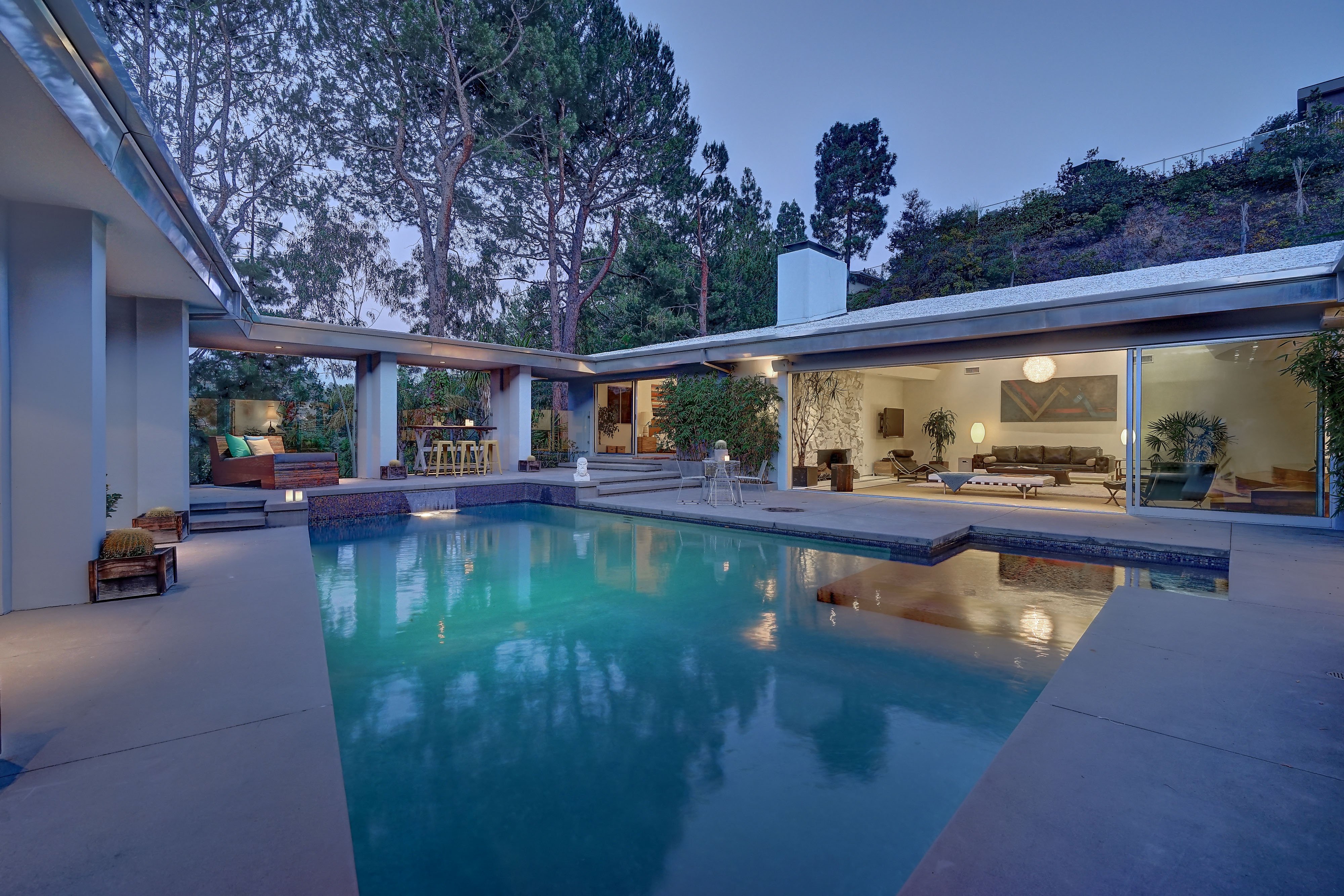
Malibu
The setting sun dancing on the diamond tip of Point Dume. The formidable waves of the Pacific crashing mightily near the multimillion-dollar celebrity homes on Carbon Beach. The endless parade of cars hugging the curve of PCH as it traces the crescent shores of the Santa Monica Bay, with kelp beds and surfers riding the rolling swells just a few feet away. Of the set of things — moments, sights, sounds — that make up our collective conception of what Southern California is, Malibu offers more than its fair share. The Chumash people gave the area its name: Humaliwo, “where the surf sounds loudly.” Spanish explorer Juan Cabrillo is said to have spotted them there on his journey up the coast in the 1540s as they peacefully gathered seafood at the water’s edge.
But cows and wheat, not the sea, were the economic lifeblood of the rancho. The last owner of the land grant, feisty May Rindge, fought a fierce legal battle to keep it just that way, blocking first the building of a railroad (the shipping pier that her and her late husband had built was sufficient to send their cattle and grains out to the wider world, thank you) and then attempting to block the creation of what would become Pacific Coast Highway itself.
Her failure to beat the state’s road builders in court was as complete as it was expensive, and Rindge was obliged to create a scheme to lease parcels of a chunk of land to the west of the lagoon to movie stars in order to defray her legal bills. Malibu Colony — at first a rustic beachfront retreat of small cabins built by studio stagehands — became a luxury enclave as leaseholders bought their rented homes and, in what’s become an all-too-familiar SoCal trope, tore them down to build bigger and grander houses. With the stars in place, Malibu just needed the surfers, and they came in droves beginning in the 1950s, swarming the beaches made popular by movies like “Gidget” and “Beach Party,” drive-in flicks that sent millions of people rushing to the West Coast for fun in the sun, all in candy-colored bathing suits and smelling like coconut oil. Today, Malibu is as popular as ever. The tourists come to lie in the sun and gawk at the massive hillside homes, the windows ablaze with the reflected light of the sinking sun. The wealthy come for the privacy and prestige. The crumbling mountains watch over it all, as the ocean beats against the yellowed edge of the continent. Beaches for miles: Do you like surfing, bodysurfing, fishing, sunbathing, nude sunbathing, and watching dolphins frolic in the waves? Yes? Welcome home. Take a hike: It’s known for its beautiful beaches, but scenic hikes like Solstice Canyon, Escondido Falls and the Backbone Trail make inland Malibu just as exhilarating. Roadside dining: From Paradise Cove to Nobu, there is something for every palate and price range to be found on the 21 miles of Pacific Coast Highway that runs through Malibu. Neighborhood challenges Paradise for a price: Relevant fact — Malibu is a place where even mobile homes can fetch many millions of dollars on the market. An aging infrastructure: Outdated water and electrical systems present another set of challenges for current and future homeowners. Expert insight Jack Pritchett, a longtime area resident and co-owner of Malibu-based Pritchett-Rapf Realtors, describes the market for anything under $2 million as highly active, while high-end demand centers on large, oceanfront properties. Last year, Pritchett brokered a $50.5-million deal in the Encinal Bluffs area involving businessman Rande Gerber and supermodel Cindy Crawford, sources told The Times. “There’s a pretty high demand for large estates on the ocean, particularly Paradise Cove and the [Encinal] Bluffs, where you can own from the highway to the beach,” said Pritchett. “It kind of depends on where you are, but [places by] the beach always move nicely.” His advice to prospective buyers looking at oceanfront real estate is to “buy on the best beach you can, on the best foundation you can afford.” “It still takes a particular breed that wants to live out here, with some of the challenges, but the trade-off is the beauty and the pace of life,” he added. Market snapshot In June, based on 23 sales, the median price for single-family homes in the 90265 ZIP Code was $2.904 million, a 2.8% increase in price year-over-year, according to Corelogic. The median price for condominiums, based on eight sales, was $887,000. Report card Within the Malibu area is Webster Elementary, which scored 944 out of 1,000 in the 2013 Academic Performance Index. Point Dume Elementary had a score of 929, and Malibu High scored 883. Juan Cabrillo Elementary had a score of 877.